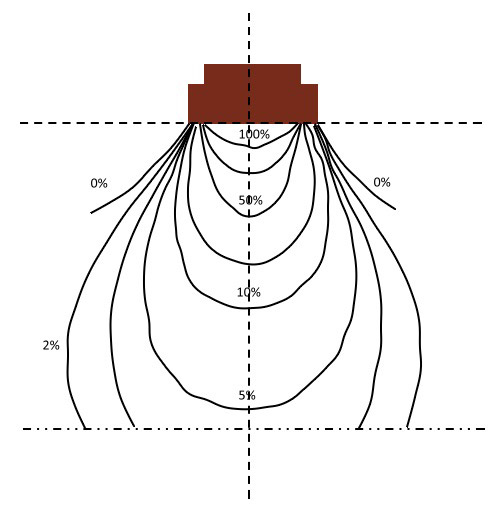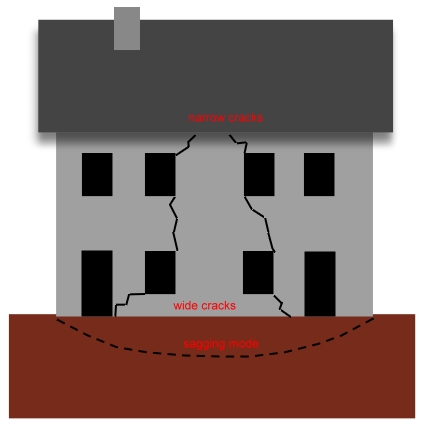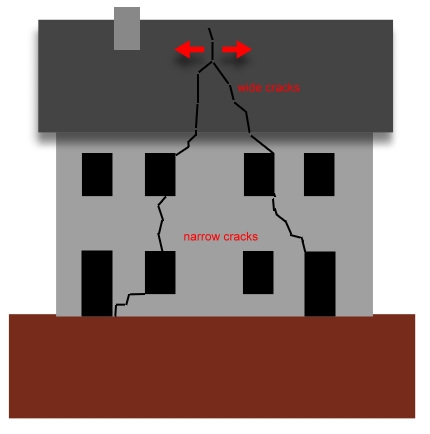+39.0521.339323
SUBSIDENCE, WHY?
The stability of a building over time is ensured by a correct design, construction and maintenance of foundation works that represent the necessary link between the structure and the ground underneath it. When the necessary conditions of static equilibrium between a structure and the ground are not guaranteed, differential displacements occur.
Nature of Soil

Solid phase:
is composed of particles of mineralogical, organic and chemical nature.
Liquid phase:
is composed of the water circulating and the minerals dissolved in it.
Gaseous phase:
is the air contained in the soil.
Volume of Soil supporting a Building

Every work of engineering that interacts with the ground defines a so-called “significant volume”. It is in this part of the volume that the
geotechnical engineering designs the shallow foundations. The direct consequence of this is that, outside of this significant volume, the
alteration of the state of tension of a soil becomes negligible. Instead at the inside of it, where there is subsidence, is where interventions
of consolidation and stabilization of the soil underneath the foundations are realized.
Subsidence

Surface subsidence consists of vertical displacements of the laying floor of the foundation, due to ground deformation technically defined
as "vertical differential settlement".

Main Causes
In the majority of cases they are due to natural and/or man-made disturbance actions that modify the physicochemical properties of the
soil and consequently its equilibrium.
- Vibrations produced by traffic of heavy vehicles, forklifts, drills, trains
- excavations near the buildings
- raising of constructions
- suction plants
- drought
- infiltration of water and fluids in the ground
- floods